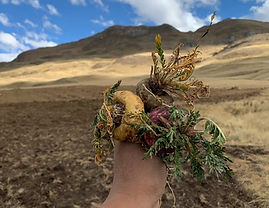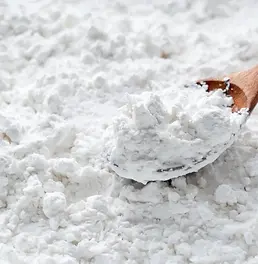

MACA QUALITY CONTROL AND SAFETY
TESTING


MACA QUALITY CONTROL AND TESTING
Proper Quality Control Is Essential
Ensuring your maca is free from high levels of heavy metals, such as lead and cadmium, as well as free from adulteration, is essential to ensuring your health is not compromised.


MACA QUALITY CONTROL
There are a lot of issues with contamination and adulteration of maca products.
Learning what they are and how to avoid them is essential in choosing a good maca product.

MACA ADULTERATION WITH SUGAR
Caramelized sugar is often added to poor-quality maca powders to make the powder taste similar to the malted caramel taste that good maca powder has.
There is an at-home test that you can do to see if your maca has been adulterated with caramelized sugar (it will not catch 100% of sugar adulteration, but it will catch it in many cases.)
If when you mix your maca in water, it turns a dark brown color, this is indicative of sugar adulteration. This does not apply to atomized maca. It works with raw and gelatinized maca.
Check out the videos down below to see how it works.

MACA ADULTERATION WITH STARCH
Cutting maca with various starch powders is a very common occurrence with maca in Peru.
While not all starch adulteration can be detected at home, there are a few things you can do to check and see if your maca powder is cut with starch.
The first is foaming. If you stir up your maca and it gets a lot of foam on the top, it is most likely diluted with starch.
The second is sedimentation. Maca powder should mix fairly uniformly in water, with only a small amount of sedimentation. If, after a minute or two, your maca begins to separate a lot and get lots of sediment on the bottom of the glass, then it is most likely diluted with starch.
Check out the videos down below to see how it works.
.webp)
MACAMIDES IN MACA
Maca contains an array of beneficial compounds and nutrients that convey a whole host of benefits.
One of the most important families of compounds is macamides.
Guaranteed levels of macamides are one of the most important measures for determining the quality of a maca product. In order for it to be considered therapeutic, it should be at least .6% macamides.
Unfortunately, most maca products do not state the levels of macamides in their products.
Look for products that list minimum amounts of these awesome compounds right on the label.
The company should also be able to offer test results from a third-party lab, verifying the levels claimed on the package.
Click the pdf button below to see sample macamide test results.
.webp)
MOLD IN MACA
During the growing process a layer of mold forms on the maca. This is just a part of its natural cycle.
This is one, of many, very important reason why you should never consume raw maca.
It is extremely important that maca should be properly dried, and processed in order to remove this mold.

HEAVY METALS IN MACA
Heavy metal contamination (lead, arsenic, cadmium, and mercury) is a big problem with a lot of maca products.
The combination of adulterants, volcanic soil, and questionable processing equipment in many facilities leads to maca products that often contain unhealthy amounts of heavy metals.
Click the pdf button below to see sample test results from the most recent batch of maca.
If you have questions about our maca quality control and testing, it's easy to schedule a free call with our herbalist and get some answers!

























